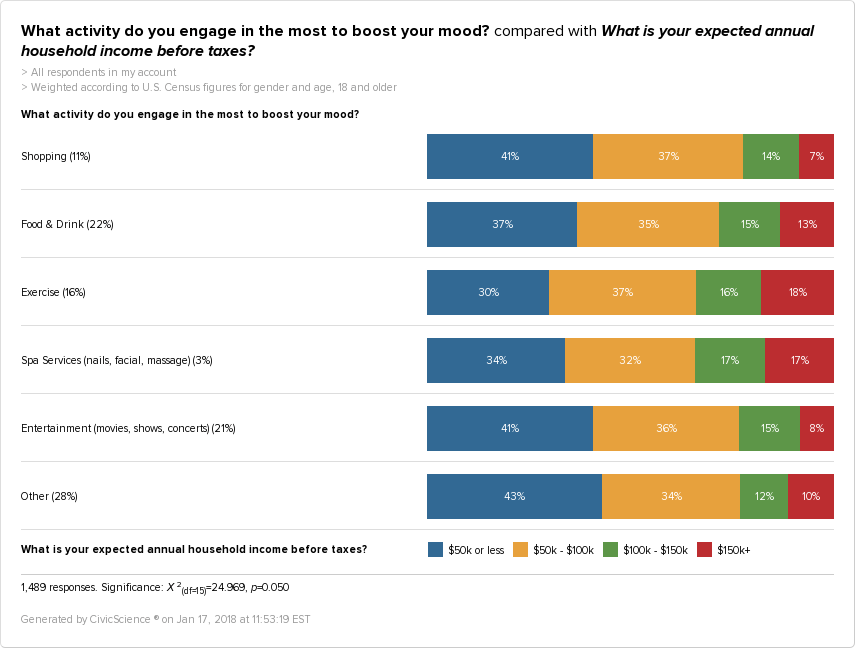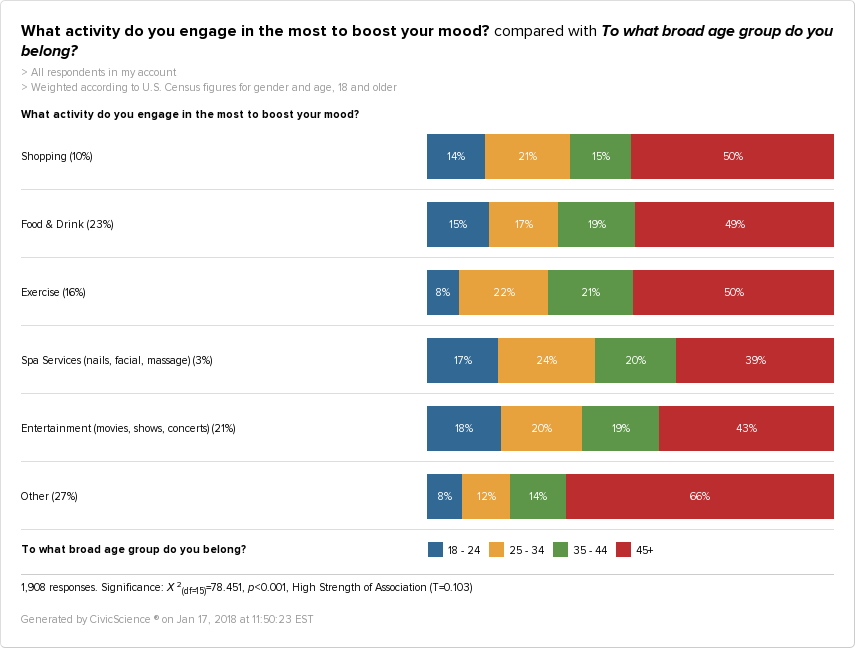The Gist: Stress relief comes in many forms, but with the rise of the self-care movement, there’s an opportunity for growth and increased spending in the spa and fitness sectors, which both Millennials and high earners look to for a mood boost.
The general population shopped till they dropped last December, and we’ve got the data to prove it. There was a 5.5% rise in holiday shopping in 2017 compared to 2016, signifying the most significant jump in holiday spending since 2010.
Many analysts surmised this jump was in part due to indulging in shopping as a means of retail therapy. Everyone can agree 2017 brought a lot of stress and uncertainty. But, what other forms of self-care are consumers turning to in times of stress?
Regarding spending habits we attribute to mood-boosting, shopping isn’t even the top activity. Food & Drink is neck in neck with Entertainment, with Exercise trailing behind it.
It’s no surprise that broken down by gender; women are much more likely to indulge in shopping as a means to relieve stress, and twice more likely than men to purchase spa services.
What’s more interesting is breaking these activities down by annual household income.
Those with higher income are less likely to shop to relieve stress. Instead, they turn to exercise, or spa services as a means to unwind. Given the often high price tags of a spa service or boutique fitness studio, this makes sense. These industries have an opportunity to lure in higher spenders. They should focus their messaging on stress relief, or the boosting effect of their services.
While spa services only comprised 3% of the responses overall, this verticle should take notice.
Millennials (18-35) follow behind 45+ when it comes to seeing spa services as a means to boost their mood. Given the rise in self-care in 2017, this sector is only more likely to grow. This $10 billion industry is on the rise for this age group, and traditional spas or health centers should take notice and adapt to what is a booming personal care market.
It doesn’t look like stress is slowing down in 2018. The self-care trend continues to dominate the health and wellness conversation. There’s an opportunity for growth in revenue for the fitness and spa industries. High earners are more likely to look to these locations to spend as a means of stress relief, and those industries should take notice.











